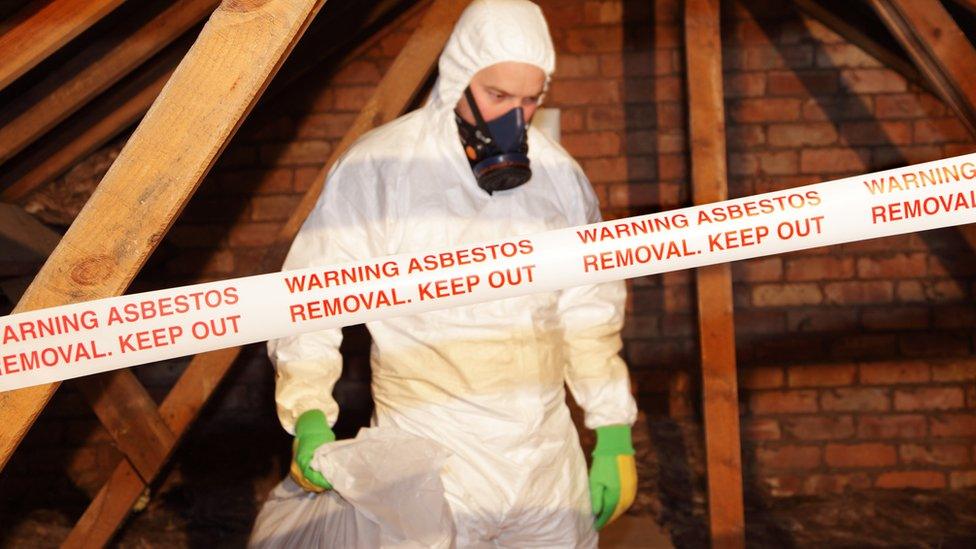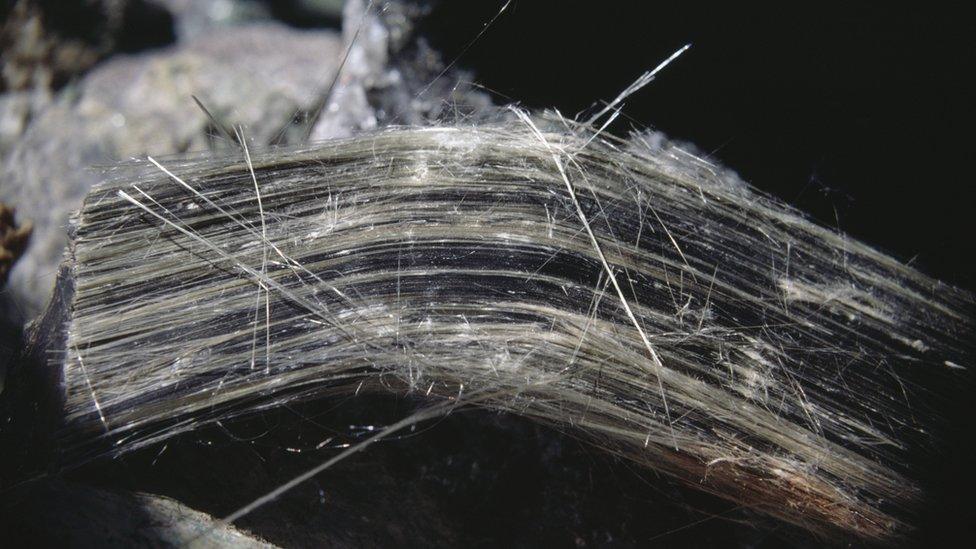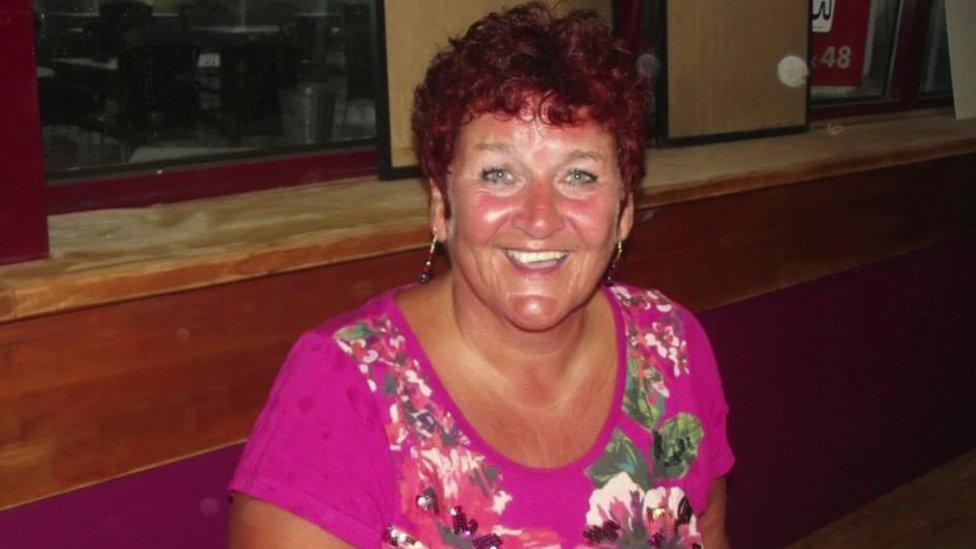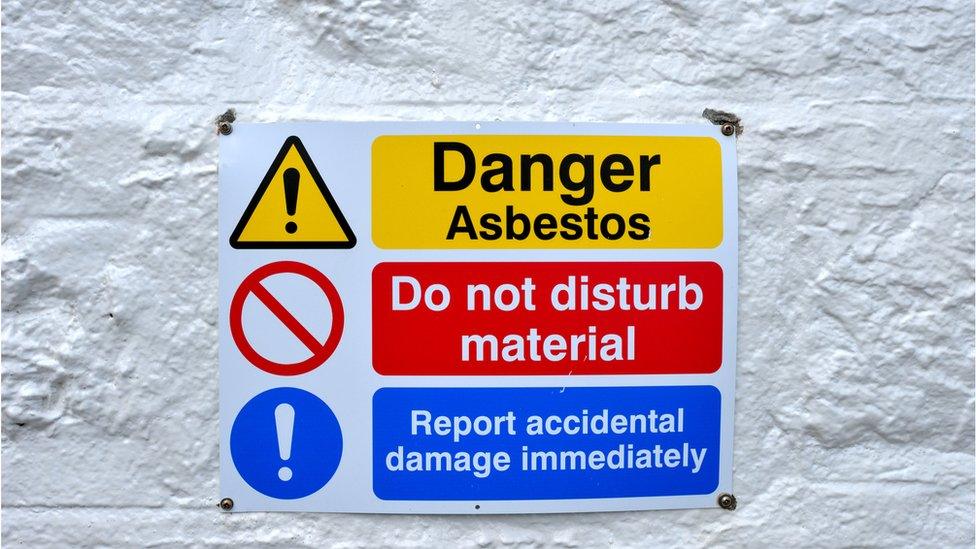Asbestos identified in majority of schools in Northern Ireland
- Published

Asbestos was once widely used in the construction of public buildings
The vast majority of schools in Northern Ireland contain asbestos, according to the Department of Education (DE).
Out of about 1,100 schools, 975 have been identified as containing asbestos by the department.
The number and names of schools were released following an assembly question by SDLP assembly member Colin McGrath.
The Education Authority (EA) said there were "strict processes in place for asbestos management".
Asbestos was banned in the UK in 1999 because the fibres were linked to diseases including cancer.
However it can be found in many public buildings, including schools and hospitals, built or refurbished during the second half of the 20th century.
It was widely used as it had significant heat and fire retardant qualities.
The presence of asbestos in a building can be managed, however, as fibres must be disturbed and inhaled to cause harm.
The Health and Safety Executive NI (HSENI) guidance on asbestos in buildings said that its presence alone "should not be a cause for concern".
"Asbestos only becomes a health risk when it is released into the air and breathed in," the guidance said.
But some teaching unions elsewhere in the UK have previously raised concerns about asbestos in school buildings.
A bereaved family in Northern Ireland recently told BBC News NI there should be more awareness of the risks of asbestos exposure.
'Prioritisation for removal'
According to separate guidance to schools from the EA, there are three main types of asbestos.
They are crocidolite - often referred to as blue asbestos; amosite - often called brown asbestos; and chrysotile - white asbestos.
"All three main types are hazardous, however, blue (crocidolite) and brown (amosite) are more hazardous than white (chrysotile)," the EA guidance said.
Of the 975 schools named by DE as containing asbestos, almost all contain chrysotile.
But hundreds contain amosite and more than 70 contain all three types.
Mr McGrath is a member of the Stormont all-party group on lung health, and said that had prompted his question regarding asbestos in schools.

When asbestos fibres are inhaled they can cause serious diseases
He said although asbestos was safe if not disturbed, the fact that so many schools contained it was a concern.
"Often schools get maintenance work or they get minor works - there can be a considerable amount of time that schools are basically building sites," he told BBC News NI.
"Given the number of schools, there is going to have to be some prioritisation for removal.
"That prioritisation will have to go alongside the maintenance schedule.
"If you've people installing new facilities, that's the type of work where you are likely to disturb the existing structures of a school and that's where there could be some potential for asbestos to be disturbed.
"Sometimes these works can be taking place alongside pupils actually being in the school.
"Where you know over the next two to three years you're going to be doing work, those should be the schools where there is priority for an in-depth assessment into where the asbestos is and can it be safely removed before the works are done."

Asbestos is present in many public buildings constructed before the material was banned in 1999
In a statement to BBC News NI, a spokesperson for the EA said: "We appreciate the emotive nature of this subject matter but wish to reassure both pupils and parents that the health and wellbeing of our children and young people, staff and the wider school community remains our highest priority.
"We invest over £1m annually on the identification, management, remediation or removal of asbestos.
"There are very strict processes in place for asbestos management and we work in partnership with a dedicated team of environmental specialists to ensure that all identified asbestos-containing materials (ACMs) are managed in accordance with legislation and guidance.
"In the vast majority of cases, ACMs can be safely managed by enclosing, sealing, encapsulating or repairing.
"Where these remedial actions are not practical or appropriate, ACMs will be removed under controlled conditions."
Related topics
- Published2 September 2018

- Published20 June 2022
